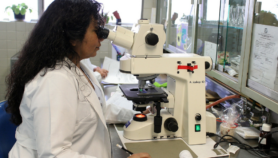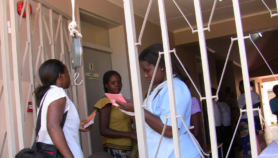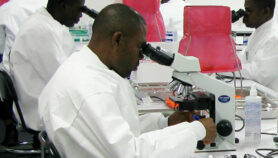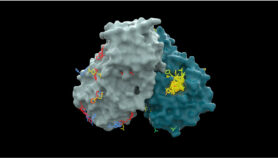By: Thomas Egwang
Send to a friend
The details you provide on this page will not be used to send unsolicited email, and will not be sold to a 3rd party. See privacy policy.
What will give you the best chance of getting a research grant? Thomas Egwang explains.
In applying for a research grant, it is essential to start by identifying the appropriate granting body or agency to contact for your proposal, as each such body usually has its own particular work plan and/or priority areas.
The Internet is usually the best source for such information. Good places to start are searchable databases, which have comprehensive links to granting bodies and agencies. Two sites of interest are GrantsNet, a database of funding opportunities in biomedical research and science education, and the Foundation Centre.
It is also a good idea to keep your eyes and ears open all the time for possible funding opportunities while scanning journals and newsletters, or even talking to colleagues.
Once you have identified the appropriate granting body and checked that you can meet both the eligibility criteria and the deadline for the submission of applications, your proposal should be written out in the format stipulated by your chosen organisation. Almost all granting bodies now have electronic application forms posted on the Internet, although these can sometimes be both complex and cumbersome.
A grant request is generally broken down into the following components:
- Objectives;
- Background and rationale;
- Experimental design and methods; and
- Critical appraisal and limitations of the proposed research.
Objectives
Succinctly describe the goal of your research, and what you propose to do to achieve this goal.
It is a good idea to propose only those objectives that you feel relatively confident of achieving within the grant period. A proposal with too many objectives to be included in a relatively short time — for example, a grant lasting only two years — is likely to be considered too ambitious, and might well be rejected, even if it involves ‘cutting-edge’ science or a revolutionary new idea.
Background and rationale
Introduce the problem that the research is intended to address. The length of your description is dictated by the length limitations on the application form. You should cover what is already known about the problem in the scientific literature, and highlight the major gaps or limitations in the current knowledge base.
The final paragraph is the most important part of this section. Here you should state precisely what you will have achieved if the project succeeds, and the likely impact of a successful research project. For example, if you are working in a field relating to the control of diseases, describe how your research could lead to new drugs, vaccines, or diagnostics, or to the improved understanding of the pathogenesis of the disease.
In addition, many application forms, even for basic research grants, now have a section in which you are required to describe how the research is likely to contribute to economic development.
Experimental design and methods
This is the most crucial part of your grant application. In it, you must describe in detail exactly what you are going to do to achieve your stated objectives.
You should provide sufficient details to enable the review panel to critically evaluate your project. In particular, you must show how the experimental design will answer the questions that you are setting out to address; poor experimental design is the downfall of many applications.
Within this section, there should be several sub-sections, some of which are required for all types of grants, others of which are dependent on the topic of the research.
Preliminary data
Granting bodies like to see a concise description of the results of any preliminary work that you have carried out. You should focus primarily on the results that suggest that the proposed work will probably succeed.
Description of study area (field studies only)
If the proposed research involves field studies, your application should include a description of some of the characteristics of the study area. These will typically include latitude and longitude, elevation, vegetation, rivers, rainy and dry seasons, mean rainfall and temperatures, schools and health centres or hospitals, and distance from the capital city.
If it is relevant, include a brief description of the population, such as the membership of ethnic group(s), main occupation (e.g. fishing or subsistence agriculture) and religion.
Subject recruitment (clinical trials)
For clinical trials, it is important to briefly describe the design of the trial, how the sample size will be calculated, and what randomisation procedure you intend to use.
If your research involves human subjects, describe how you plan to recruit research subjects and what criteria you will use for including or excluding particular individuals. Most importantly, include how you will obtain informed consent of the research subjects, and which national authority or authorities have given ethical approval for your research.
Sample collection (clinical trials)
Once subjects have been recruited and randomly assigned to different experimental groups, samples — for example of blood, urine or faeces — may need to be collected. The grant application must describe how this will be done, how the samples will be stored temporarily, and how they will be transported to the laboratory for permanent storage.
Laboratory investigations
It is important to provide sufficient detail in this section for the reviewer to agree that the proposed work is feasible. There is no need to go into a lot of detail if the procedures that you plan to use are standard and widely described in scientific literature. However, you must still provide some details of your proposed laboratory procedures. Make sure you include a brief description of the various analytical techniques that you will carry out in the laboratory.
Data analysis
Briefly describe some of the important aspects of the way in which the data obtained during the research will be analysed. This includes how the data will be entered into a computerised database and what software will be used. In the case of clinical trials, you should include how various variables, either continuous or discrete, will be compared among different groups studied using a variety of statistical methods, and how you intend to control for confounding variables.
Collaboration
It is important to identify the partners with whom you intend to collaborate with, either in your own country or overseas. This can be done in a separate section, or it can be incorporated into the appropriate sections under ‘Experimental design and methods’.
The choice of research partner or partners is crucial for your research project. They should provide complementary, rather than identical, expertise and/or facilities, and it must be clear how their presence will strengthen your proposal. Reviewers often disapprove of ‘artificial’ partnerships where it is clear that one partner is in the driving seat (often the partner from the West or North who wrote the grant application) and the other (often the developing country partner) who has been recruited primarily as a conduit for the collection of field materials.
References
This is usually placed at the end of the ‘Experimental design and methods’ section. The style of presentation is a question of personal choice, unless the granting body has specified it.
Critical appraisal and limitations of the proposed approach
Describe the possible limitations of your proposed approach. For example, one of your proposed methodologies may have certain disadvantages that could impact adversely on your findings. A reviewer will certainly point this out, and might find it sufficient grounds for rejecting your proposal. To meet such concerns, you should therefore state clearly that you are aware of the limitations of your approach, and if possible propose an alternative strategy if you first approach fails to deliver.
You should also describe briefly the particular strengths of your laboratory that are likely to contribute to the success of the project if it is funded, (for example, the fact that it is located in a disease-endemic area, ensuring access to field materials, expertise and clinical facilities).
Thomas Egwang is senior research scientist in the Department of Medical Parasitology at Medical Biotechnology Labs in Kampala, Uganda
This article was previously part of SciDev.Net’s e-guide to science communication and has been reformatted to become this practical guide.













